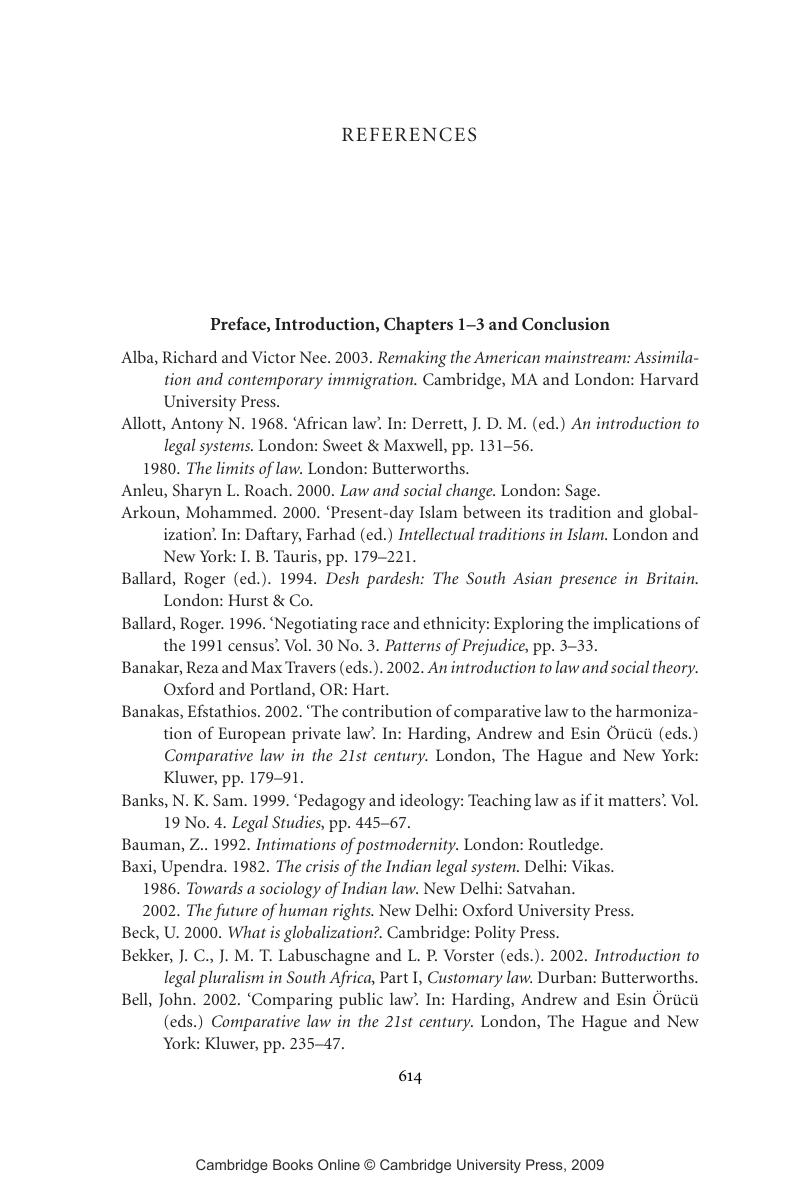References
Published online by Cambridge University Press: 09 November 2009
Summary

- Type
- Chapter
- Information
- Comparative Law in a Global ContextThe Legal Systems of Asia and Africa, pp. 614 - 658Publisher: Cambridge University PressPrint publication year: 2006



